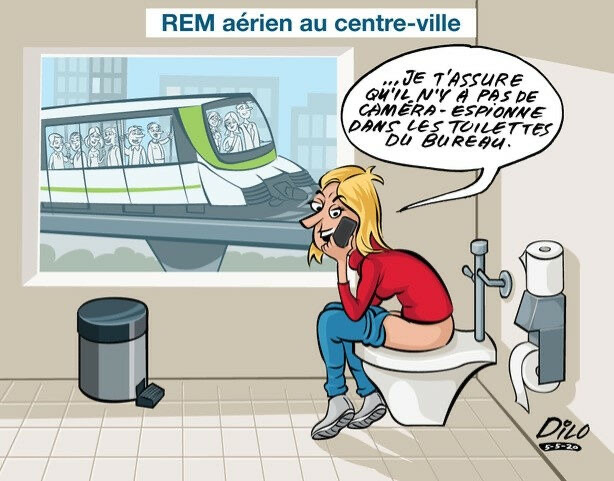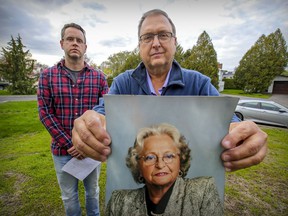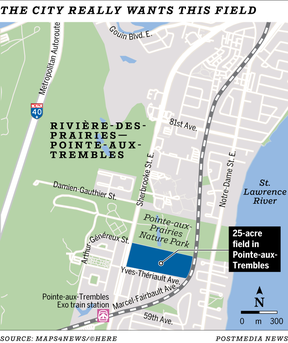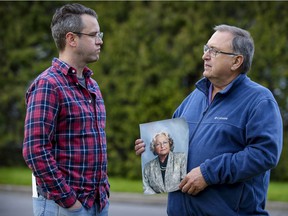Non, car lorsqu’il traverse une intersection, le tram est prioritaire (les feux de circulations sont synchronisés avec le passage du tram, qui roule en site propre sauf aux intersections).
Ça c’est la conclusion à laquelle la CDPQ souhaite que vous arriviez, sans que ce soit nécessairement la bonne. Leur document fonctionne!
Pour la portion qui au sol, il serait possible que le tramway n’arrête à aucun feu. Plusieurs petits intersections seraient simplement éliminées, et pour les autres, les feux seraient parfaitement synchronisés avec le tram. C’est ce qui se fait depuis des décennies en Europe, mais on essai de nous faire croire qu’on ne serait pas capable ici.
Aussi, la portion qui serait au sol représente une toute petite fraction du réseau. Sur la majorité du tracé, le tramway irait exactement à la même vitesse qu’un métro. On parle d’une perte d’une à deux minutes maximum sur l’ensemble de la longueur, ce qui est très négligeable pour ne pas tuer un centre-ville.
Encore là, je reste davantage convaincu par un métro léger en tunnel au centre-ville, mais c’est juste inquiétant à quel point la CDPQ peut faire croire n’importe quoi en manipulant les chiffres et les données.
Il y a une limite à la synchronisation des feux de circulation. On ne peut pas toujours mettre le feu vert lorsque le tramway arrive, sinon le tramway dans l’autre direction serait pris avec les feux rouges.
Il faut juste regarder les chiffres. Si l’intervalle maximale est de 3m45s pour le tramway, je n’ai pas de misère à croire l’étude en question. Mettre des tramways aux 2 minutes sur le boulevard René-Lévesque n’est pas réalisable; les trains seraient pris en file et la vitesse moyenne se verrait diminuée.
Je ne comprends pas trop l’argument ici.
En tout cas, c’est comme cela que ça marche sur les tramways moderne (pour l’avoir testé dans plusieurs villes). Je n’invente rien, et je n’ai jamais vu de tramway attendre au feu rouge pour de la circulation automobile.
Ça, parce que les tramways en général ont des stations assez rapprochées les unes des autres. D’où le fait que le feu vert peut être maintenu dans les deux directions jusqu’à ce que le tramway arrive à la prochaine station, soit pas plus d’une minute.
Aucun rapport. Pour avoir travaillé sur la conception et l’élaboration détaillée de deux lignes de tramway, je peux dire que vous ne savez visiblement pas de quoi vous parlez en terme de gestion intelligente des feux. C’est tellement plus complexe que de maintenir un feu vert. On est rendus beaucoup plus loin, et je vous invite à aller essayer certains réseaux en Europe afin de mieux comprendre les réalités.
J’ai répondu de manière un peu vite et simpliste, mais je suis entièrement d’accord avec toi. J’essayais juste de défendre maladroitement les vieux préjugé sur le tramway et son intégration. Je l’ai pris très régulièrement à Strasbourg et Paris, et je me suis déjà intéressé à la gestion intelligente des feux (puisque je travaille en informatique, avec un intérêt pour l’intelligence artificielle).
Enfin on commence un peu à s’écarter du sujet là  . Revenons au REM de l’Est.
. Revenons au REM de l’Est.
Inquiète-toi pas, je comprends ce que tu veux dire pour les feux synchronisés qui détectent la venue du tramway dans les deux directions. Je n’ai jamais été en Europe mais j’ai pu voir les vidéos.
Essaie de faire accepter à la ville d’éliminer des intersections routières aux automobilistes au centre-ville. Le tissu urbain n’est pas le même qu’en Europe. Les routes perpendiculaires au boulevard René-Lévesque sont quasiment toutes importantes. Bloquer la circulation routière sur Beaver Hall, Bleury ou Jeanne-Mance juste pour mettre la station plus loin au coin de Saint-Urbain ne fait pas vraiment de sens. Déjà que ces rues sont à sens unique, circuler en automobile dans le secteur serait un cauchemar avec un terre-plein de tramway.
- Et je suis désolé, mais des tramways aux deux minutes, oui ça se fait, mais la vitesse moyenne en prend un coup de ralenti par contre, d’où le tramway roule à vitesse basse sur quelques sections en centre-ville.
Dans La Presse d’aujourd’hui:

133,000pphd for $10 billion is $1.45 per pass./km. Twice as much as for the first REM and it’s shorter.
They are waiting for somebody important (not us) to call their bluff.
I’m not sure it’s that simple, and after the various levels of government cover 50%+ of the eventual costs, there’s still the matter of the “redevances”, the royalties that ARTM and municipalities will have to pay per passenger-kilometre.
I believe that good transit is a social service, and not for profit, but it has to be a good project. REM-A isn’t perfect (and we keep finding out more and more shortcomings), but it’s nowhere near as flawed and ill-conceived as we’ve seen in the REM-de-l’Est proposal.
Je pense pas que ce soit comme ça qu’ils en soient venus à calculer le tarif des usagers… C’est une question de bénéfices annuels en fonction du nombre de passagers vs le % qu’ils veulent avoir sur leur investissement, annuellement.
What do you mean 50%? It’s 85%.
“Les revenus d’achalandage seront perçus à partir de la mise en service commercial du premier segment. Ces revenus seront financés par les tarifs que l’ARTM appliquera sur les titres de transport et par une contribution des municipalités de 30 millions de dollars. Le résiduel sera financé à hauteur de 85 % par le gouvernement du Québec et de 15 % par les municipalités” Rapport du Véraficateur Générale du Québec 2018-19, page 46
Le 85% est à partir du résiduel et non à partir du montant total.
Si par exemple les usagers via les tarifs de l’ARTM paient 33% du coût d’exploitation du REM, le gouvernement provincial va payer 85% de 66%, si ma compréhension est bonne.
Histoire d’expropriation dans la Gazette aujourd’hui
City land grab in Pointe-aux-Trembles a ‘scam,’ grandson says
Family adds its voice to others denouncing Montreal’s ruthless tactics to acquire their land for nothing.
Linda Gyulai • Montreal Gazette
May 10, 2021 • 33 minutes ago • 5 minute read

Françoise Allard, pictured, owned two parcels of land in Pointe-aux-Trembles that the city tried to acquire from her for free. Her son, Guy Martel, right, and grandson, Bruno Martel, managed to get the city to pay her — but at a price they say is “peanuts.” PHOTO BY JOHN MAHONEY /Montreal Gazette
The city of Montreal has perpetrated a “monumental scam” to grab plots of land belonging to several individuals in a vacant field in Pointe-aux-Trembles that happens to sit next to the future REM de l’Est, says the grandson of one of them.
“In my personal opinion, it’s a scam,” said Bruno Martel, whose grandmother, Françoise Allard, died at the age of 90 in January 2020 before seeing a cent from the city for her two plots of land that it had initially tried to get her to hand over for free. Her family urged her to hold out for payment for the expropriation, and it was her estate that closed the sale with the city in December.
The city of Montreal took his land and never told him
The city took advantage of an elderly woman, Martel said, adding that the $62,568 the city paid for the 2,607 square metres of land near Sherbrooke St. E. and Yves-Thériault Ave. is better than free but still “peanuts.” The family signed the sales deed just to end the saga, he said.
“It’s a monumental scam,” Martel repeated.
The Montreal Gazette first reported in June on the plight of a half-dozen people, all strangers to one another, who each owned individual pieces of the 25-acre field that is zoned residential and sandwiched between the Pointe-aux-Prairies Nature Park and a housing development.

In 2017, the city contacted some of the owners to sign away their rights to their land with no compensation. In the case of two other owners, Gilles Labrèche and Christos Goulakos, the city simply took their respective parcels behind their backs that year by registering deeds at the Registre foncier du Québec that declared the city the owner. It was the Montreal Gazette that contacted the two men, who are in their 80s and 90s, respectively, last year and informed them that they no longer own their land.
The city claims it had been unable to find Goulakos and Labrèche. However, the city has not returned the land to the men, compensated them or apologized since its error was revealed.
Mayor Valérie Plante’s office said in June it was touched by the predicament Goulakos and Labrèche faced. However, when asked whether the city would return their land, spokesperson Laurence Houde-Roy said: “We won’t redo the past, but we’ll ensure that the procedures are more clear in the future.”
Allard’s family said last year it didn’t want to go public because the sale to the city, the terms of which were set out in a promise to sell signed by Allard before her death, was not yet finalized.
Now, the family is speaking out, adding their voices to those of other owners and their relatives who believe that Montreal civil servants engaged in ruthless tactics to acquire their land for nothing.
“My mother was angry to see that they tried to have the land for free,” said Liette Martel, Allard’s daughter and Bruno Martel’s aunt. “She thought that because she’s old, the city tried to take advantage of her.”
Allard, a widow, was one of the owners who received a renunciation form from the city out of the blue in 2017. A four-sentence letter, addressed to “Sir,” referenced the lot numbers of her two parcels and began: “The city is preparing to undertake the procedures provided for in Section 192 of Schedule C of the Charter. You will find the details of the section attached.”
The missive instructed Allard to sign and return an attached form, which was a renunciation of her right to her land and a renunciation of her right and her inheritors’ right to compensation now or in the future.
The letter was signed by a civil servant in the real estate transactions division of Montreal’s real estate management and planning department.

“In my personal opinion, it’s a scam,” says Bruno Martel, left, of how the city of Montreal tried to obtain two parcels in Pointe-aux-Trembles that belonged to his grandmother, Françoise Allard, pictured. He and his father, Guy Martel, right, are speaking out now about their experience dealing with the city. PHOTO BY JOHN MAHONEY /Montreal Gazette
Allard was ready to comply with the letter, her grandson recalled. However, Bruno Martel said he and his father, Guy Martel — Allard’s son — convinced her to hold off. Bruno Martel then contacted the civil servant.
“I responded by email to the civil servant and said the land isn’t available for giving away, but it could be for sale,” Bruno Martel said.
An email exchange ensued and eventually a different civil servant offered Allard $50,000 for her land. Her grandson responded with $75,000, and the city came back with a price that split the difference as its final offer.
“My mother was so happy,” Liette Martel said, adding that Allard had been stressed out after receiving the city’s renunciation form. “Even with their first offer, she wanted to accept right away. We told her, ‘Mom, we’ll negotiate anyway,'” she said.
Her father, Luc Martel, had bought the two lots in the field at a public auction in 1991. The city sold the lots at auctions between 1986 and 2004 after seizing the field, which is the size of about 18 football fields, from a developer for unpaid taxes in 1986. For an unknown reason, the city held onto dozens of lots, and sold others.
“My father was a speculator,” Liette Martel said. “That’s what he did in life. He bought a lot of buildings and land at sheriff’s sales. It was his trade.”
However, her father soon learned that the city had rendered the lots in the Pointe-aux-Trembles field worthless, she said. That’s because the lots were hemmed in by the city’s lots and the city evaluated each lot at $1, making it impossible for an owner to find a buyer.
The city should never have sold the lots in the first place, Liette Martel said. “We couldn’t do anything with those lots. They had no value.”
Nevertheless, Bruno Martel said he’s dissatisfied because the land seems clearly worth more than the $24 per square metre his father and aunt obtained. The site is 500 metres from the Pointe-aux-Trembles train station, built for the Mascouche commuter train line in 2014 and expected to become a stop on a future tram or REM line that would link downtown and Pointe-aux-Trembles.
“It’s next to a nice nature park, you have a high school nearby, access to trains,” he said of the land. “It’s certainly a choice sector.”
The REM de l’est announced by CDPQ Infra in December will, in fact, render the Pointe-aux-Trembles station an intermodal stop and the terminus of the REM line.
Martel also contends the city wasn’t transparent in the negotiations for the sale because the civil servant confirmed the city had an appraisal for the land value but repeatedly refused to disclose it.
“The appraisal was at their exclusive use,” he said he was told by the city official.
“We sold for nothing,” Liette Martel said, agreeing with her nephew. “It’s not the market value.” But, she added, the family at least didn’t lose money in the transaction, and she said she felt she was honouring her mother’s wishes by selling under the terms she had agreed to before her death.
REM 1
tarifs 29%
gouvernement provincial 54%
contributions des municipalités 16%
Les deux niveaux du gouvernement ensemble 70%
Building costs. Quebec, Ottawa, Montreal and Hydro-Québec are covering a little over 50% of REM-A’s development costs. The royalties are a separate operating fee that CDPQi will charge ARTM and the municipalities per passenger-kilometre.
This isn’t related to REM though.
You mean REM2. Do you really think it is going to be any different? Operations will be 70% subsidized by us and since it is an expensive project, and the ARTM promised last year to have the same fare everywhere, guess who is going to make up the difference?